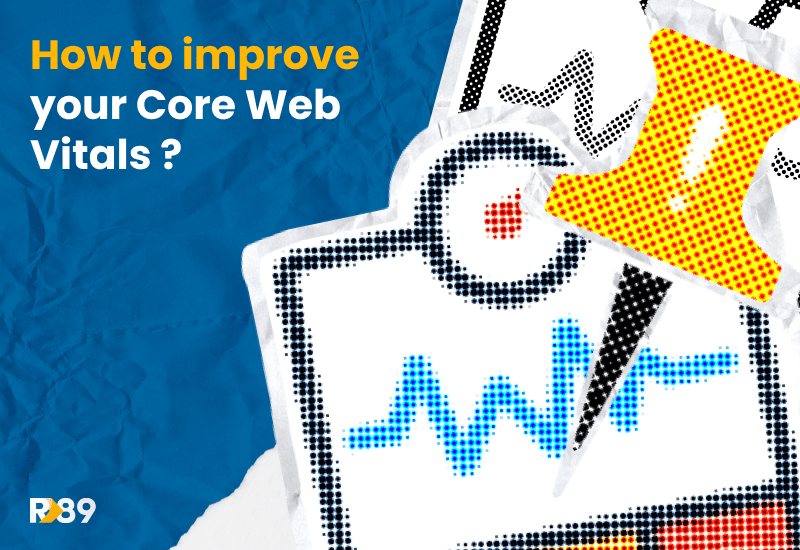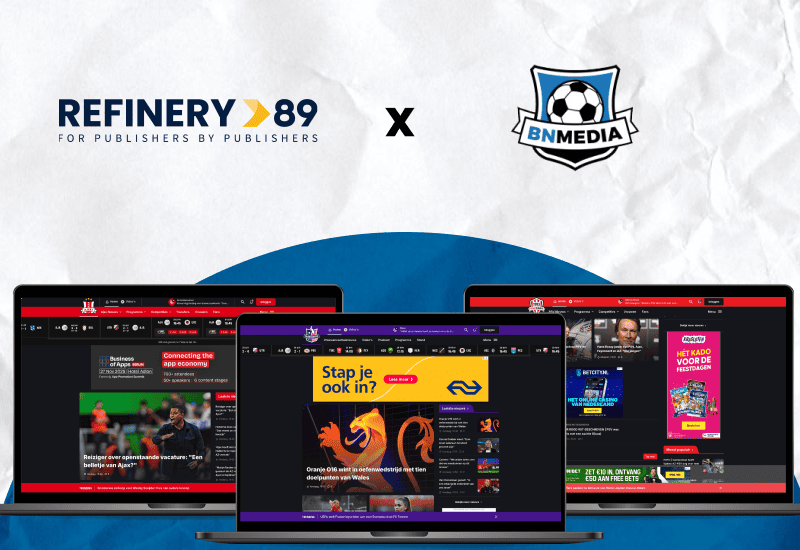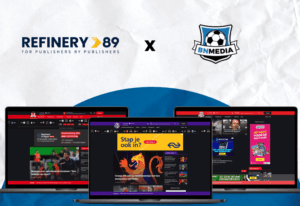Same as you dutifully go to the dentist every once in a while, another good habit you should adopt is running regular check-ups on your website’s Core Web Vitals. These metrics help you measure your website’s user experience and can be used to improve your visibility on the search engine result pages. And do you know what that means? If you are a publisher, it can impact your ad revenue!
Read along to learn how to improve your Core Web Vitals!
Let’s recap! What are Core Web Vitals?
Core Web Vitals are a series of user-centered metrics set by Google to measure user experience on a website based on its loading time, responsiveness, and layout stability. This metrics can have an impact on your search engine positioning and your SEO game. This is why it’s important to keep them in check.
The Core Web Vitals are:
- LCP (Largest Contentful Paint): measures your webpages’ loading time.
- INP (Interaction to Next Paint): measures the interactivity of your webpage.
- CSL (Cumulative Layout-Shift): tracks your website’s stability.
If you want to know more, don’t skip this article to understand your Core Web Vitals basics!
How to track your Core Web Vitals?
If you want to keep track of your website’s Core Web Vitals, we recommend you do the checking by combining data from Google Analytics, Google Search Consolee Page Speed Insights. The latter tool will offer a comprehensive overview and potential solutions to improve your Core Web Vitals.
Another tool that can come in handy is Google Lighthouse. Google Lighthouse provides audits for performance, accessibility, progressive web apps, SEO, and more. It yields a complete and actionable report that will not only score your website performance but also provide a step-by-step guide on how to improve it.
How to improve your Core Web Vitals?
Let’s see some methods you can put into practice to optimize your website’s Core Web Vitals and create a more engaging user experience:
Compress and optimize images
Certifique-se de usar formatos de imagem modernos, redimensionar os elementos e implementar um design responsivo para um carregamento rápido.
Reserve space for ads
Evite que ocorram mudanças no layout reservando o espaço para a altura do anúncio. Saiba mais sobre essa e outras estratégias para otimizar o posicionamento dos seus anúncios e evitar uma má experiência do usuário neste artigo de nosso especialista em AdOps, Germán Tinaut.
Melhore a resposta do servidor.
Improve backend speed so that the content your user wants to see or access to appears fast after the initial request is made.
Otimize o JavaScript
Minimize e adie o carregamento do JavaScript não crítico para evitar bloquear o thread principal. Considere técnicas de divisão de código ou dividir os scripts em partes menores.
Utilize uma Rede de Distribuição de Conteúdo (CDN)
Distribua os recursos do seu site por meio de uma Rede de Distribuição de Conteúdo (CDN). Trata-se de uma rede de servidores distribuídos geograficamente que ajuda a acelerar o tempo de carregamento da página. Esses servidores armazenam cópias em cache do conteúdo do seu site e as entregam a partir da localização mais próxima ao usuário. Isso ajudará a reduzir os tempos de carregamento com base na localização geográfica dos usuários e melhorar o desempenho do seu site.
Otimize suas fontes.
Implemente valores de font-display, pré-carregue as fontes da web ou use tamanhos de fontes que correspondam às fontes de fallback do sistema para reduzir as alterações no renderização do texto.
Aproveite o Lazy Loading
Atraso o carregamento de imagens fora da tela para priorizar o conteúdo inicialmente visível implementando o Lazy Loading. Lazy loading is a technique that defers the loading of non-critical resources at page load time. Instead of loading all assets simultaneously, it waits until the user’s browser viewport is about to display an item before loading it.
Especifique as dimensões de tamanho para imagens e vídeos
Usar os atributos de largura e altura nas tags de mídia evita reflows, pois o navegador reserva espaço para elas durante o carregamento.
Reduza o impacto dos scripts de terceiros
Review third-party scripts (analytics, marketing tags) and optimize their loading for reduced interference.
Need help crafting a Core Web Vital-friendly ad strategy?
We happen to know a thing or two about making awesome ad strategies that put more money in your pockets and improve your SEO game! 😉 Our Single Tag leve, solution was not only designed to boost your ad revenue through the roof but also to take extra good care of your website! For more info reach out to our team of experts who will guide you through the entire progress of taking your ad monetization to a whole new level while improving your Core Web Vitals!








